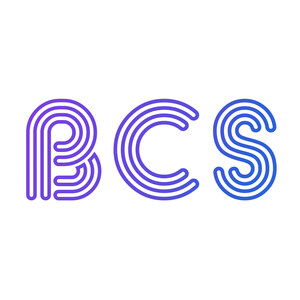Key Takeaways
- BCS's AI Driven Unified Orchestration platform, Symphony, with its OAT technology has managed the SAP systems of Heineken, Kellanova, Philips, AbInBev, Transport for NSW to name a few.
- Minimizes errors in cloud migrations and optimizes workforce efficiency, while also reducing downtime and maintenance costs.
- Integrates with other tech like ITSM, infrastructure-as-code
MYRTLE BEACH, S.C., July 15, 2024 /PRNewswire/ -- In the move to cloud, organizations enter a new paradigm of always-on business that is accompanied by always-on routine tasks, operations and activities. And while important to the smooth running of your SAP environment, the staff time investment can be significant for "keeping the lights on" kind of activities.
Enter cloud orchestration that can not only reduce errors and optimize workforce efficiency, but also decrease downtime by 60 percent and maintenance costs by 40 percent, according to Prakash Palani, the founder and chief technology officer of Basis Cloud Solutions (BCS).
"Migrating SAP systems, whether it is moving from on-prem to the cloud or between different cloud providers, involves a lot of moving parts like virtual machines (VMs), operating systems (OSs), databases, disaster recovery, among others, so there is huge benefit to organizations to simplify the process.
"In cloud migrations, organizations spend most of their time in handovers between teams," Palani said. "The cloud team has a task, then hand over to the OS team, who then hands over to the database team, and then once again to the SAP team. Thereby resulting in increasing the chance of human error, missing timelines and is an inefficient use of talent." A huge hindrance to seamless output at a holistic environment level.
A unified cloud orchestration platform aims to addresses the mentioned pain point of handover time and combine automation scripts, managing tasks like system management, VM creation, database installations and upgrades and SAP Basis operations like migrations and refreshes.
"If you want to mimic SAP GUI transactions, Fiori actions, Salesforce actions, etc. as part of the functional validation process, cloud orchestration can be used," Palani added. Orchestration platforms use templates to manage specific use cases like high availability disaster recovery (HADR).
"Templates enables every client to gain best practice every time whether that's following guidelines for an OS or for database and provides consistency to each client. Additionally, templates within the orchestration platform can also handle post-migration work like kernel upgrades, OS patches, system refreshes and many more."
By integrating with IT service management (ITSM) platforms like Jira and ServiceNow, the BCS cloud orchestration platform enables true Zero-Touch Operations, streamlining processes and reducing the need for manual interventions.
"For example, your agile teams or project teams or whoever is responsible for a particular function or action, can raise a ticket within the ITSM and it can instantly be actioned," Palani said.
"One such example is SSL certificate renewal, which must be done every 365 days to keep its validity. If the rumors of renewals shortening to 90 days are true, then you'd have to renew the certificate of your SAP systems and then immediately supply it to your partners or the integration systems every quarter. Cloud orchestration can automate and transform all of that."
Part of the attraction of orchestration platforms is the protection of existing technology investments, particularly during costly migration projects. "Whatever investment, from existing infrastructure-as-code (IAC) tools like HashiCorp's Terraform and Ansible, won't be wasted with cloud orchestration. Customers can also minimize the time involved in the planning and architectural design phase of a migration, according to Palani.
"In cloud migrations, we spend a lot of time and human energy into understanding a customer's IT landscape before getting to the architecture design phase". He added that architecture design is always unique to each specific customer and environment, making it more time-consuming compared to the engineering work that follows the design phase.
An orchestration platform would assist in the discovery process, finding out what a customer's IT environment looks like, what memory and CPU they have, their utilisation and how everything will be mapped to the cloud. The insights are all collected and would run an assessment to map out the migration process.
With experience managing around 1500 SAP systems globally, the BCS' cloud orchestration platform, Symphony, has more than 400 built-in automation use cases. Palani calls it a full-stack cloud management platform, because Symphony can enable a single consultant to run end-to-end stack-related operations. "We have transformed SAP Basis administrators to FULL STACK CONSULTANTS to be able to perform any operations underneath Symphony," he said.
BCS has worked with clients like Heineken, Kellanova, Philips, ABInBev, Transport for New South Wales to manage their SAP systems with Symphony.
About BCS (www.basiscloudsolutions.com)
BCS is at the forefront of cloud technology, utilizing Full Stack Technology to advance IT and Cloud Automation. With the Symphony platform, BCS offers a unified AI Driven cloud orchestration solution that significantly improves operational efficiency and productivity for enterprises across the globe. BCS is dedicated to modernizing business infrastructures, providing accessible pathways to technological transformation. Symphony also works across cloud platforms, including hyperscalers Amazon Web Services, Microsoft Azure, Google Cloud Platform, IBM Power, as well as on-premise systems.
Media Contact
Priya S Arakkal
843-252-4867
[email protected]
SOURCE Basis Cloud Solutions
WANT YOUR COMPANY'S NEWS FEATURED ON PRNEWSWIRE.COM?
Newsrooms &
Influencers
Digital Media
Outlets
Journalists
Opted In




Share this article